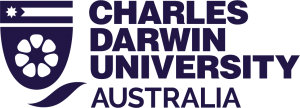Introduction
The topic of copyright is full of myths – everyone has their own opinion of what you can and can’t copy and reuse. Many would have heard “I found it on the internet so it’s free”. Not so. In this Thing we’ll explore some of the more common myths, and link you to a range of resources that clearly explain just what you can and can’t do.
Try
Visit the Australian Copyright Council and review the selection of information sheets. Download and save those relevant to you (20 minutes).
Explore the information at Copyright @ CDU (60 minutes).
Investigate and register for the free online course, Copyright 4 Educators (10 minutes to register, 7 week course).
More Detail
Firstly, what is copyright? Simply, it’s the protection of any original piece of literary and artistic work: this includes paintings, photographs, databases, screenplays, sound recordings, books, letters, training manuals and much, much more. In Australia, copyright is covered by the Copyright Act. Copyright is free and is automatic – creators don’t need to register for copyright or attach any symbols.
So what are some of the copyright myths?
- I’m not making money out of it
- I’m using less than 10% so I don’t need permission
- I’m going to credit the creator so I don’t need permission
- I’m going to change it, so I don’t need permission
- It’s too hard to get permission
- If something doesn’t have a copyright notice, it’s not covered
- Copyright only applies to published works
- It’s on the internet so I can use it
This three minute video has the answers to five common myths.
Copying for educational purposes
In Australia, the Statutory Education Licence covers the education copying scheme, and is managed by the Copyright Agency. This licence allows educators to use text and images from any source and in any format, including digital or hard copy, online, Australian or foreign and published or unpublished, provided
- it is for educational purposes only, and
- the educator works for an educational institution covered by the Statutory Education Licence
- the educator only uses a “reasonable portion” of a “work”
Copyright Agency provides a useful guide to the question, how much can I use?
To develop and deliver high quality training, educators working in Registered Training Organisations often need to source current material quickly from sources such as newspapers, journals and websites. The Australian Skills Quality Authority provides a quick guide, Five things RTOs should know about copyright.
CDU’s Library Services provide a comprehensive guide to copyright for educators and students: Copyright @ CDU, and if you’re on campus, you can always ask the librarians for assistance.
How have we managed copyright in 23 Things? We link directly to articles and other websites, we embed videos and Twitter posts (which acts as a link to the source), we only use very brief direct quotes, and we provide references for the source of our information.
Coming up in Thing 21, we’ll be covering some other options including Creative Commons and Open Education Resources.
Share
Which myths have been debunked for you as a result of reading the information sheets and websites referred to this week?
Reminder: Track your Professional Development with this form. Record of evidence form

 CC 0
CC 0